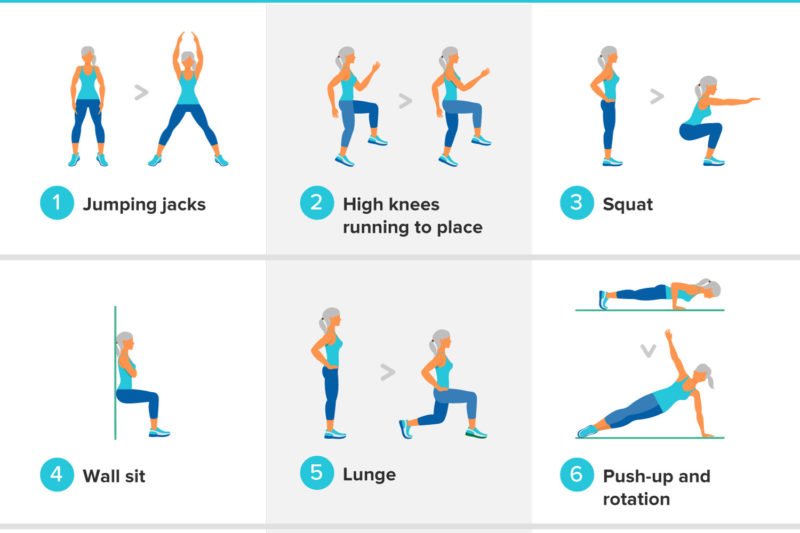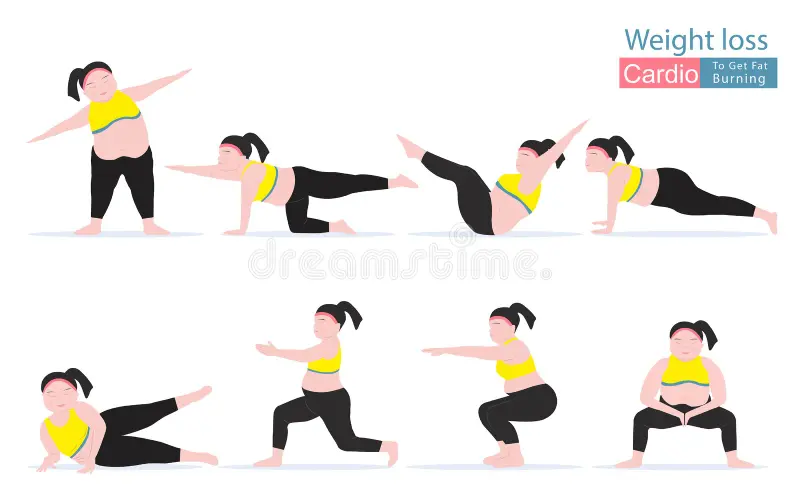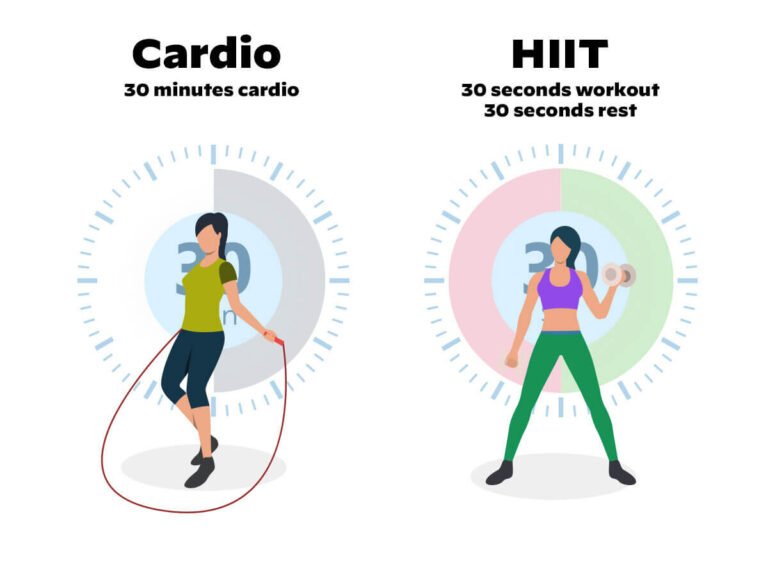If you’re trying to lose weight, you’ve probably wondered: Is HIIT or cardio better for weight loss? Both workouts are popular, but which one actually helps you burn more fat? Let’s break it down so you can choose the best workout for fat loss based on your goals.
Understanding HIIT and Cardio
High-Intensity Interval Training (HIIT) involves short bursts of intense activity followed by rest or low-intensity movement. A classic example? Sprinting for 30 seconds, walking for 30 seconds, and repeating. This style of training is known for HIIT fat burning, as it keeps your body working even after you stop exercising.
On the other hand, steady-state cardio for weight loss includes activities like jogging, cycling, or swimming at a consistent pace. This is often referred to as HIIT vs. steady-state cardio, as both methods have their own fat-burning benefits.


Does HIIT Burn More Fat Than Cardio?
The short answer? Yes—HIIT typically burns more fat in less time. Studies show that HIIT vs cardio for belly fat loss favors HIIT because it increases your metabolism for hours post-workout, a phenomenon known as the afterburn effect (excess post-exercise oxygen consumption or EPOC). This means your body continues to burn calories even while you’re resting.
But does that mean steady-state cardio isn’t effective? Not at all! If your goal is to stay active, improve endurance, and burn calories over a longer period, cardio for weight loss is still a solid option.
HIIT vs. Cardio: Which Burns More Calories?
When comparing HIIT vs cardio which burns more calories, research suggests HIIT burns 25–30% more calories in a shorter time than steady-state cardio. However, traditional cardio allows you to sustain longer workouts, which could lead to similar calorie expenditure over time.
If you’re short on time, HIIT for weight loss might be your best bet. But if you prefer a lower-impact approach that doesn’t push you to your limits, steady-state cardio could be the way to go.
Best Fat-Burning Workout at Home
Don’t have access to a gym? No problem! Here’s a simple HIIT workout plan for fat loss that you can do at home:
- Jump squats – 30 seconds
- Push-ups – 30 seconds
- Burpees – 30 seconds
- Mountain climbers – 30 seconds
- Rest – 30 seconds
Repeat for 3–5 rounds. This quick session is one of the best fat-burning workouts at home because it targets multiple muscle groups while keeping your heart rate elevated.
Cardio vs. HIIT for Beginners: Where to Start?
If you’re new to working out, cardio vs. HIIT for beginners depends on your fitness level. HIIT can be intense, so start with a mix—try 20 minutes of brisk walking combined with short bursts of jogging to build endurance before transitioning into full HIIT sessions.
How Long Should a HIIT Workout Be for Fat Loss?
You don’t need to spend an hour doing HIIT. Studies suggest that how long a HIIT workout should be for fat loss is 20–30 minutes, done 3–4 times per week. This duration is enough to maximize fat burning without overtraining.
Best Time to Do HIIT for Weight Loss
The best time to do HIIT for weight loss depends on your schedule. Some people prefer morning workouts to boost energy, while others feel stronger in the evening. The key is consistency—whenever you can give it your best effort, that’s the best time.
Benefits of HIIT Over Steady-State Cardio
- Burns more fat in less time
- Boosts metabolism post-workout
- Increases cardiovascular fitness quickly
- Can be done anywhere, no equipment needed
- Preserves muscle while burning fat
Final Thoughts: Which Workout Should You Choose?
If you’re looking for fast and efficient fat-burning exercises, HIIT is your answer. If you prefer a steady, low-impact approach that you can sustain for longer, steady-state cardio is a great option. For best results, mix both into your routine—combine HIIT with steady-state cardio and even cardio vs strength training to keep your workouts balanced and effective.
Whichever you choose, the most important thing is staying consistent and finding a workout you enjoy—because that’s the one you’ll stick with in the long run!
For more weight loss tips, Click here

